Chapter 1. BIOLOGY: HOW LIFE WORKS
BIOLOGY: HOW LIFE WORKS
TABLE OF CONTENTS
About the Authors iv
Brief Contents vi
Preface viii
Acknowledgments xxi
PART 1 FROM CELLS TO ORGANISMS
CHAPTER 1 LIFE
Chemical, Cellular, and Evolutionary Foundations 1-1
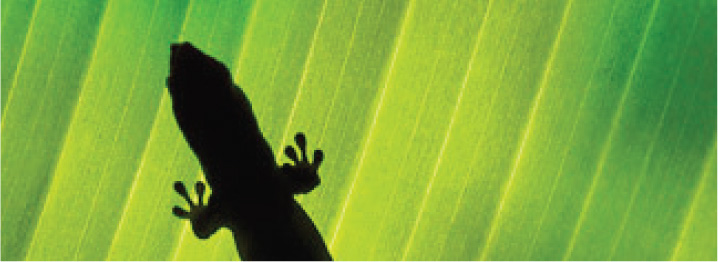
1.1 The Scientific Method 1-2
Observation allows us to draw tentative explanations called hypotheses. 1-2
A hypothesis makes predictions that can be tested by observation and experiments. 1-3
HOW DO WE KNOW?
What caused the extinction of the dinosaurs? 1-4
General explanations of natural phenomena supported by many experiments and observations are called theories. 1-5
1.2 Chemical and Physical Principles 1-5
The living and nonliving worlds share the same chemical foundations and obey the same physical laws. 1-6
The scientific method shows that living organisms come from other living organisms. 1-7
HOW DO WE KNOW?
Can living organisms arise from nonliving matter? 1-8
HOW DO WE KNOW?
Can microscopic life arise from nonliving matter? 1-8
1.3 The Cell 1-8
Nucleic acids store and transmit information needed for growth, function, and reproduction. 1-10
Membranes define cells and spaces within cells. 1-11
Metabolism converts energy from the environment into a form that can be used by cells. 1-12
A virus is genetic material in need of a cell. 1-12
1.4 Evolution 1-12
Variation in populations provides the raw material for evolution, or change over time. 1-12
Evolution predicts a nested pattern of relatedness among species, depicted as a tree. 1-13
Evolution can be studied by means of experiments. 1-15
HOW DO WE KNOW?
Can evolution be demonstrated in the laboratory? 1-15
1.5 Ecological Systems 1-16
Basic features of anatomy, physiology, and behavior shape ecological systems. 1-16
Ecological interactions play an important role in evolution. 1-17
1.6 The Human Footprint 1-18
? CASE 1 The First Cell: Life’s Origins C1-1
CHAPTER 2 THE MOLECULES OF LIFE 2-1
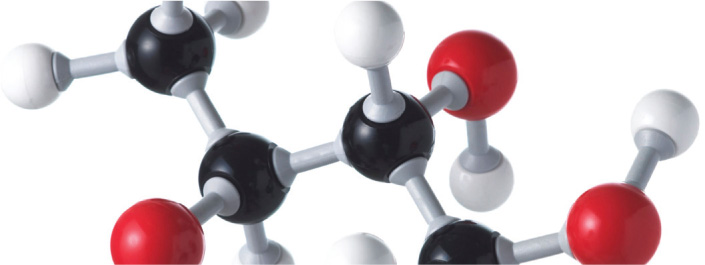
2.1 Properties of Atoms 2-1
Atoms consist of protons, neutrons, and electrons. 2-1
Electrons occupy regions of space called orbitals. 2-3
Elements have recurring, or periodic, chemical properties. 2-3
2.2 Molecules and Chemical Bonds 2-4
A covalent bond results when two atoms share electrons. 2-4
A polar covalent bond is characterized by unequal sharing of electrons. 2-5
A hydrogen bond is an interaction of a hydrogen atom and an electronegative atom. 2-5
An ionic bond forms between oppositely charged ions. 2-6
A chemical reaction involves breaking and forming chemical bonds. 2-6
2.3 Water: The Medium of Life 2-7
Water is a polar molecule. 2-7
pH is a measure of the concentration of protons in solution. 2-7
Hydrogen bonds give water many unusual properties. 2-8
2.4 Carbon: Life’s Chemical Backbone 2-9
Carbon atoms form four covalent bonds. 2-9
Carbon-based molecules are structurally and functionally diverse. 2-9
2.5 Organic Molecules 2-11
Proteins are composed of amino acids. 2-11
Nucleic acids encode genetic information in their nucleotide sequence. 2-12
Complex carbohydrates are made up of simple sugars. 2-13
Lipids are hydrophobic molecules. 2-15
? 2.6 How Did the Molecules of Life Form? 2-17
HOW DO WE KNOW?
Could the building blocks of organic molecules have been generated on the early Earth? 2-18
The building blocks of life can be generated in the laboratory. 2-18
Experiments show how life’s building blocks can form macromolecules. 2-18
CHAPTER 3 NUCLEIC ACIDS AND THE ENCODING OF BIOLOGICAL INFORMATION 3-1
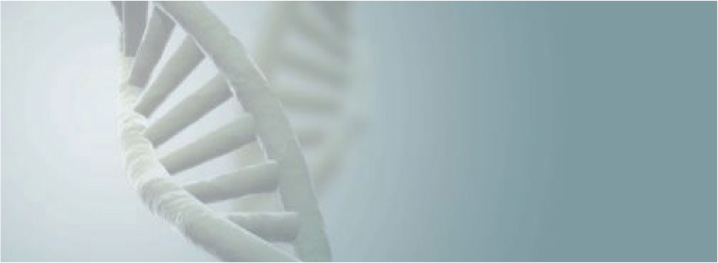
3.1 Major Biological Functions of DNA 3-2
DNA can transfer biological characteristics from one organism to another. 3-2
HOW DO WE KNOW?
What is the nature of the genetic material? 3-2
DNA molecules are copied in the process of replication. 3-3
Genetic information flows from DNA to RNA to protein. 3-3
HOW DO WE KNOW?
What is the nature of the genetic material? 3-3
3.2 Chemical Composition and Structure of DNA 3-4
A DNA strand consists of subunits called nucleotides. 3-4
DNA is a linear polymer of nucleotides linked by phosphodiester bonds. 3-6
Cellular DNA molecules take the form of a double helix. 3-6
The three-dimensional structure of DNA gave important clues about its functions. 3-8
Cellular DNA is coiled and packaged with proteins. 3-9
3.3 Retrieval of Genetic Information Stored in DNA: Transcription 3-10
? What was the first nucleic acid molecule, and how did it arise? 3-10
In transcription, DNA is used as a template to make complementary RNA. 3-11
Transcription starts at a promoter and ends at a terminator. 3-12
RNA polymerase adds successive nucleotides to the 3′ end of the transcript. 3-13
The RNA polymerase complex is a molecular machine that opens, transcribes, and closes duplex DNA. 3-15
3.4 Fate of the RNA Primary Transcript 3-15
Messenger RNA carries information for the synthesis of a specific protein. 3-15
Primary transcripts in eukaryotes undergo several types of chemical modification. 3-16
Some RNA transcripts are processed differently from protein-coding transcripts and have functions of their own. 3-18
CHAPTER 4 TRANSLATION AND PROTEIN STRUCTURE 4-1
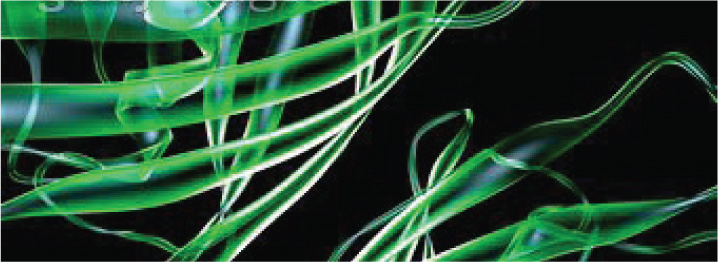
4.1 Molecular Structure of Proteins 4-1
Amino acids differ in their side chains. 4-2
Successive amino acids in proteins are connected by peptide bonds. 4-3
The sequence of amino acids dictates protein folding, which determines function. 4-4
Secondary structures result from hydrogen bonding in the polypeptide backbone. 4-5
HOW DO WE KNOW?
What are the shapes of proteins? 4-5
Tertiary structures result from interactions between amino acid side chains. 4-6
Polypeptide subunits can come together to form quaternary structures. 4-7
Chaperones help some proteins fold properly. 4-8
4.2 Translation: How Proteins Are Synthesized 4-8
Translation uses many molecules found in all cells. 4-8
The genetic code shows the correspondence between codons and amino acids. 4-10
HOW DO WE KNOW?
How was the genetic code deciphered? 4-11
Translation consists of initiation, elongation, and termination. 4-12
? How did the genetic code originate? 4-14
4.3 Protein Evolution and the Origin of New Proteins 4-15
Most proteins are composed of modular folding domains. 4-15
VISUAL SYNTHESIS Gene Expression 4-16
Amino acid sequences evolve through mutation and selection. 4-18
CHAPTER 5 ORGANIZING PRINCIPLES
Lipids, Membranes, and Cell Compartments 5-1

5.1 Structure of Cell Membranes 5-1
Cell membranes are composed of two layers of lipids. 5-2
? How did the first cell membranes form? 5-3
Cell membranes are dynamic. 5-3
Proteins associate with cell membranes in different ways. 5-5
5.2 The Plasma Membrane and Cell Wall 5-6
HOW DO WE KNOW?
Do proteins move in the plane of the membrane? 5-7
The plasma membrane maintains homeostasis. 5-8
Passive transport involves diffusion. 5-8
Primary active transport uses the energy of ATP. 5-9
Secondary active transport is driven by an electrochemical gradient. 5-10
Many cells maintain size and composition using active transport. 5-11
The cell wall provides another means of maintaining cell shape. 5-12
5.3 The Internal Organization of Cells 5-12
Eukaryotes and prokaryotes differ in internal organization. 5-13
Prokaryotic cells lack a nucleus and extensive internal compartmentalization. 5-13
Eukaryotic cells have a nucleus and specialized internal structures. 5-13
5.4 The Endomembrane System 5-15
The endomembrane system compartmentalizes the cell. 5-16
The nucleus houses the genome and is the site of RNA synthesis. 5-17
The endoplasmic reticulum is involved in protein and lipid synthesis. 5-17
The Golgi apparatus modifies and sorts proteins and lipids. 5-18
Lysosomes degrade macromolecules. 5-19
Protein sorting directs proteins to their proper location in or out of the cell. 5-20
5.5 Mitochondria and Chloroplasts 5-22
Mitochondria provide the eukaryotic cell with most of its usable energy. 5-22
Chloroplasts capture energy from sunlight. 5-23
CHAPTER 6 MAKING LIFE WORK
Capturing and Using Energy 6-1

6.1 An Overview of Metabolism 6-1
Organisms can be classified according to their energy and carbon sources. 6-2
Metabolism is the set of chemical reactions that sustain life. 6-3
6.2 Energy 6-3
Kinetic and potential energy are two forms of energy. 6-3
Chemical energy is a form of potential energy. 6-4
ATP is the cell’s energy currency. 6-4
6.3 The Laws of Thermodynamics 6-5
The first law of thermodynamics: Energy is conserved. 6-5
The second law of thermodynamics: Disorder tends to increase. 6-5
6.4 Chemical Reactions 6-6
A chemical reaction occurs when molecules interact. 6-6
Chemical reactions are subject to the laws of thermodynamics. 6-7
The hydrolysis of ATP releases energy. 6-8
Non-spontaneous reactions are often coupled to spontaneous reactions. 6-9
6.5 Enzymes and the Rate of Chemical Reactions 6-10
Enzymes reduce the activation energy of a chemical reaction. 6-10
Enzymes form a complex with reactants and products. 6-11
Enzymes are highly specific. 6-12
HOW DO WE KNOW?
Do enzymes form complexes with substrates? 6-12
HOW DO WE KNOW?
Do enzymes form complexes with substrates? 6-13
Enzyme activity can be influenced by inhibitors and activators. 6-13
Allosteric enzymes in the cell are regulated by activators and inhibitors. 6-14
? What naturally occurring elements might have spurred the first reactions that led to life? 6-15
CHAPTER 7 CELLULAR RESPIRATION
Harvesting Energy from Carbohydrates and Other Fuel Molecules 7-1
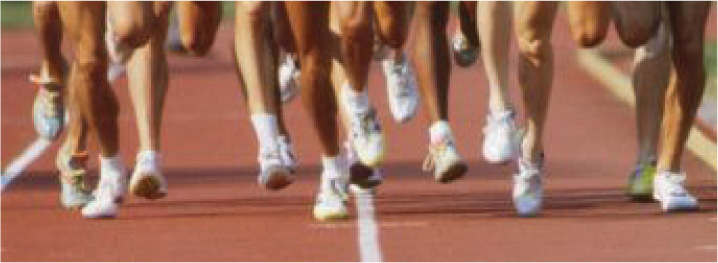
7.1 An Overview of Cellular Respiration 7-1
Cellular respiration occurs in four stages. 7-2
Cellular respiration involves a series of redox reactions. 7-2
Chemical energy is stored in reduced molecules such as carbohydrates and lipids. 7-4
Electron carriers transport high-energy electrons. 7-4
ATP is generated by substrate-level phosphorylation and oxidative phosphorylation. 7-4
7.2 Glycolysis: The Splitting of Sugar 7-5
Glycolysis is the partial breakdown of glucose. 7-7
7.3 Acetyl-CoA Synthesis 7-7
The oxidation of pyruvate connects glycolysis to the citric acid cycle. 7-7
7.4 The Citric Acid Cycle 7-8
The citric acid cycle produces ATP and electron carriers. 7-8
? What were the earliest energy-harnessing reactions? 7-10
7.5 The Electron Transport Chain and
Oxidative Phosphorylation 7-10
The electron transport chain transfers electrons and pumps protons. 7-10
The proton gradient is a source of potential energy. 7-12
ATP synthase converts the energy of the proton gradient into the energy of ATP. 7-12
HOW DO WE KNOW?
Can a proton gradient drive the synthesis of ATP? 7-13
7.6 Anaerobic Metabolism and the Evolution of Cellular Respiration 7-14
Fermentation extracts energy from glucose in the absence of oxygen. 7-15
? How did early cells meet their energy requirements? 7-16
7.7 Metabolic Integration 7-17
Excess glucose is stored as glycogen in animals and starch in plants. 7-17
Sugars other than glucose contribute to glycolysis. 7-17
Fatty acids and proteins are useful sources of energy. 7-18
The intracellular level of ATP is a key regulator of cellular respiration. 7-19
Exercise requires several types of fuel molecules and the coordination of metabolic pathways. 7-20
CHAPTER 8 PHOTOSYNTHESIS
Using Sunlight to Build Carbohydrates 8-1
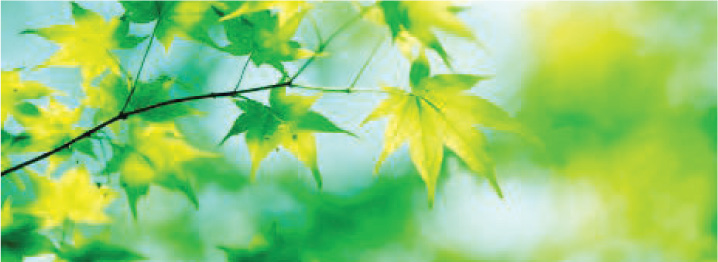
8.1 The Natural History of Photosynthesis 8-1
Photosynthesis is a redox reaction. 8-1
HOW DO WE KNOW?
Does the oxygen released by photosynthesis come from H2O or CO2? 8-2
Photosynthesis is widely distributed. 8-3
The evolutionary history of photosynthesis includes both horizontal gene transfer and endosymbiosis. 8-4
The photosynthetic electron transport chain takes place on specialized membranes. 8-5
8.2 The Calvin Cycle 8-6
The incorporation of CO2 is catalyzed by the enzyme rubisco. 8-6
NADPH is the reducing agent of the Calvin cycle. 8-6
The regeneration of RuBP requires ATP. 8-7
The steps of the Calvin cycle were determined using radioactive CO2. 8-7
Carbohydrates are stored in the form of starch. 8-7
HOW DO WE KNOW?
How is CO2 used to synthesize carbohydrates? 8-8
8.3 Capturing Sunlight into Chemical Forms 8-9
Photosystems use light energy to set the photosynthetic electron transport chain in motion. 8-9
HOW DO WE KNOW?
Do chlorophyll molecules operate on their own or in groups? 8-11
The photosynthetic electron transport chain connects two photosystems. 8-12
The accumulation of protons in the thylakoid lumen drives the synthesis of ATP. 8-14
Cyclic electron transport increases the production of ATP. 8-14
The spatial organization of the thylakoid membrane contributes to its functioning. 8-15
? How did early cells meet their energy requirements? 8-15
8.4 Challenges to Photosynthetic Efficiency 8-16
Excess light energy can cause damage. 8-16
Photorespiration leads to a net loss of energy and carbon. 8-17
Photosynthesis captures just a small percentage of incoming solar energy. 8-19
VISUAL SYNTHESIS Harnessing Energy: Photosynthesis and Cellular Respiration 8-20
? CASE 2 Cancer: When Good Cells Go Bad C2-2
CHAPTER 9 CELL COMMUNICATION 9-1
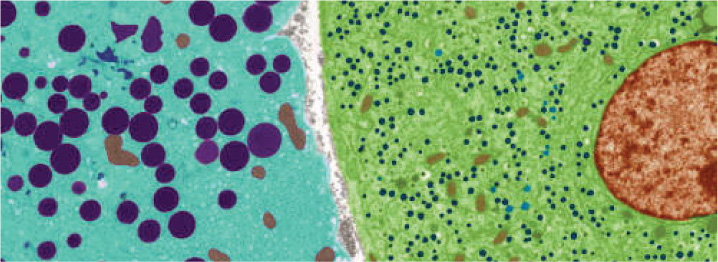
9.1 Principles of Cell Communication 9-1
Cells communicate using chemical signals that bind to specific receptors. 9-2
Signaling involves receptor activation, signal transduction, response, and termination. 9-2
9.2 Types of Cell Signaling 9-3
Endocrine signaling acts over long distances. 9-3
Paracrine and autocrine signaling act over short distances. 9-4
HOW DO WE KNOW?
Where do growth factors come from? 9-4
Juxtacrine signaling depends on direct cell-cell contact. 9-5
9.3 Receptors and Receptor Activation 9-6
Receptors can be on the cell surface or in the interior of the cell. 9-6
There are three major types of cell-surface receptor, which act like molecular switches. 9-7
9.4 Signal Transduction, Response, and Termination 9-8
Signals transmitted by G protein-coupled receptors are amplified and regulated at several steps. 9-8
Receptor kinases phosphorylate each other and activate intracellular signaling pathways. 9-11
Ligand-gated ion channels alter the movement of ions across the plasma membrane. 9-13
? How do cell signaling errors lead to cancer? 9-15
Signaling pathways can intersect with one another in a cell. 9-15
CHAPTER 10 CELL FORM AND FUNCTION
Cytoskeleton, Cellular Junctions, and Extracellular Matrix 10-1

10.1 Tissues and Organs 10-1
Tissues and organs are communities of cells. 10-2
The structure of skin relates to its function. 10-2
10.2 The Cytoskeleton 10-3
Microtubules are hollow, tubelike polymers of tubulin dimers. 10-4
Microfilaments are helical polymers of actin. 10-4
Intermediate filaments are polymers of proteins that vary according to cell type. 10-4
? How can doctors test for the spread of cancer? 10-5
Microtubules and microfilaments are dynamic structures. 10-6
The cytoskeleton is an ancient feature of cells. 10-7
10.3 Cellular Movement 10-8
Motor proteins associate with microtubules and microfilaments to cause movement. 10-8
Organelles with special arrangements of microtubules propel cells through the environment. 10-10
Actin polymerization moves cells forward. 10-10
10.4 Cell Adhesion 10-11
Cell adhesion molecules allow cells to attach to other cells and to the extracellular matrix. 10-11
Adherens junctions and desmosomes connect adjacent animal cells and are anchored to the cytoskeleton. 10-12
Tight junctions prevent the movement of substances through the space between animal cells. 10-13
Gap junctions and plasmodesmata allow the passage of substances from one cell to another. 10-15
10.5 The Extracellular Matrix 10-15
The extracellular matrix of plants is the cell wall. 10-15
The extracellular matrix is abundant in connective tissues of animals. 10-17
The basal lamina is a special form of extracellular matrix. 10-18
? How do cancer cells spread throughout the body? 10-18
Extracellular matrix proteins influence cell shape and gene expression. 10-18
HOW DO WE KNOW?
Can extracellular matrix proteins influence gene expression? 10-20
CHAPTER 11 CELL DIVISION
Variations, Regulation, and Cancer 11-1
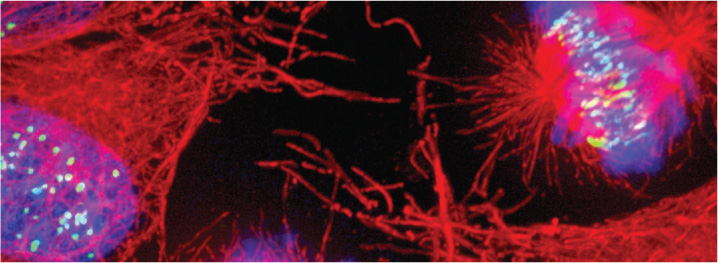
11.1 Cell Division 11-2
Prokaryotic cells reproduce by binary fission. 11-2
Eukaryotic cells reproduce by mitotic cell division. 11-3
The cell cycle describes the life cycle of a eukaryotic cell. 11-3
11.2 Mitotic Cell Division 11-4
The DNA of eukaryotic cells is organized as chromosomes. 11-4
Prophase: Chromosomes condense and become visible. 11-5
Prometaphase: Chromosomes attach to the mitotic spindle. 11-6
Metaphase: Chromosomes align as a result of dynamic changes in the mitotic spindle. 11-6
Anaphase: Sister chromatids fully separate. 11-6
Telophase: Nuclear envelopes re-form around newly segregated chromosomes. 11-6
The parent cell divides into two daughter cells by cytokinesis. 11-7
11.3 Meiotic Cell Division 11-7
Pairing of homologous chromosomes is unique to meiosis. 11-8
Crossing over between DNA molecules results in exchange of genetic material. 11-8
The first meiotic division brings about the reduction in chromosome number. 11-9
The second meiotic division resembles mitosis. 11-10
Division of the cytoplasm often differs between the sexes. 11-11
Meiosis is the basis of sexual reproduction. 11-13
11.4 Regulation of the Cell Cycle 11-14
Protein phosphorylation controls passage through the cell cycle. 11-14
HOW DO WE KNOW?
How is progression through the cell cycle controlled? 11-15
Different cyclin-CDK complexes regulate each stage of the cell cycle. 11-16
Cell cycle progression requires successful passage through multiple checkpoints. 11-16
? 11.5 What Genes Are Involved In Cancer? 11-18
Oncogenes promote cancer. 11-18
HOW DO WE KNOW?
Can a virus cause cancer? 11-18
Proto-oncogenes are genes that when mutated may cause cancer. 11-19
Tumor suppressors block specific steps in the development of cancer. 11-21
Most cancers require the accumulation of multiple mutations. 11-21
VISUAL SYNTHESIS: Cellular Communities 11-22
? CASE 3 You, From A to T: Your Personal Genome C3-2
CHAPTER 12 DNA REPLICATION AND MANIPULATION 12-1
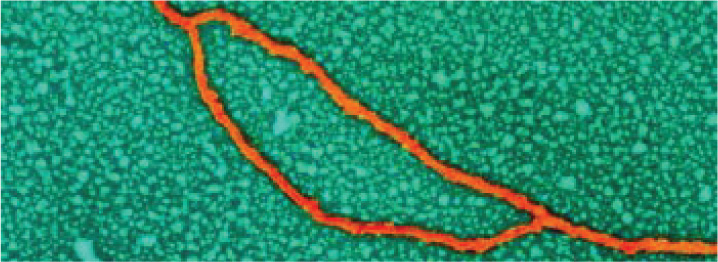
12.1 DNA Replication 12-1
During DNA replication, the parental strands separate and new partners are made. 12-2
HOW DO WE KNOW?
How is DNA replicated? 12-2
New DNA strands grow by the addition of nucleotides to the 3′ end. 12-4
In replicating DNA, one daughter strand is synthesized continuously and the other in a series of short pieces. 12-4
A small stretch of RNA is needed to begin synthesis of a new DNA strand. 12-5
DNA polymerase is self-correcting because of its proofreading function. 12-6
Many proteins participate in DNA replication. 12-7
12.2 Replication of Chromosomes 12-8
Replication of DNA in chromosomes starts at many places almost simultaneously. 12-8
Telomerase restores tips of linear chromosomes shortened during DNA replication. 12-8
12.3 Isolation, Identification, and Sequencing of DNA Fragments 12-10
The polymerase chain reaction selectively amplifies regions of DNA. 12-10
Electrophoresis separates DNA fragments by size. 12-11
Restriction enzymes cleave DNA at particular short sequences. 12-13
DNA strands can be separated and brought back together again. 12-14
DNA sequencing makes use of the principles of DNA replication. 12-15
? What new technologies will be required to sequence your personal genome? 12-16
12.4 Recombinant DNA and Genetically Modified Organisms 12-17
Recombinant DNA combines DNA molecules from two sources. 12-18
Recombinant DNA is the basis of genetically modified organisms. 12-19
CHAPTER 13 GENOMES 13-1
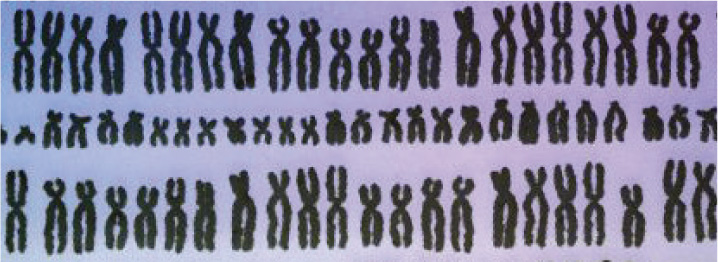
13.1 Genome Sequencing 13-1
Complete genome sequences are assembled from smaller pieces. 13-2
HOW DO WE KNOW?
How are whole genomes sequenced? 13-2
Sequences that are repeated complicate sequence assembly. 13-2
? Why sequence your personal genome? 13-4
13.2 Genome Annotation 13-4
Genome annotation identifies various types of sequence. 13-4
Genome annotation includes searching for sequence motifs. 13-5
Comparison of genomic DNA with messenger
RNA reveals the intron-exon structure of genes. 13-6
An annotated genome summarizes knowledge, guides research, and reveals evolutionary relationships among organisms. 13-6
The HIV genome illustrates the utility of genome annotation and comparison. 13-6
13.3 Gene Number, Genome Size, and Organismal Complexity 13-7
Gene number is not a good predictor of biological complexity. 13-7
Viruses, bacteria, and archaeons have small, compact genomes. 13-8
Among eukaryotes, there is no relationship between genome size and organismal complexity. 13-9
About half of the human genome consists of repetitive DNA and transposable elements. 13-10
13.4 Organization of Genomes 13-11
Bacterial cells package their DNA as a nucleoid composed of many loops. 13-11
Eukaryotic cells package their DNA as one molecule per chromosome. 13-13
The human genome consists of 22 pairs of chromosomes and two sex chromosomes. 13-13
Organelle DNA forms nucleoids that differ from those in bacteria. 13-14
13.5 Viruses and Viral Genomes 13-15
The host range of a virus is determined by viral and host surface proteins. 13-15
Viruses can be classified by their genomes. 13-16
Viruses have diverse sizes and shapes. 13-17
Viruses are capable of self-assembly. 13-18
CHAPTER 14 MUTATION AND DNA REPAIR 14-1
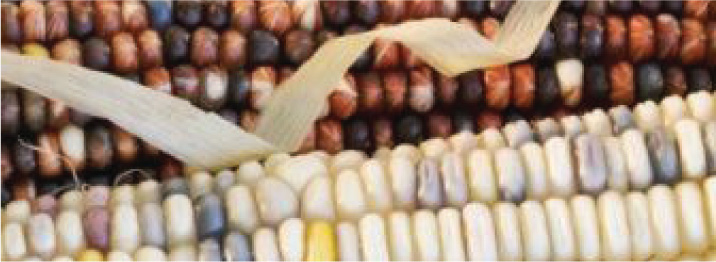
14.1 The Rate and Nature of Mutations 14-1
For individual nucleotides, mutation is a rare event. 14-1
Across the genome as a whole, mutation is common. 14-2
Only germ-line mutations are transmitted to progeny. 14-3
? What can your personal genome tell you about your genetic risk factors? 14-4
Mutations are random with regard to an organism’s needs. 14-5
14.2 Small-Scale Mutations 14-5
Point mutations are changes in a single nucleotide. 14-5
HOW DO WE KNOW?
Do mutations occur randomly, or are they directed by the environment? 14-6
Small insertions and deletions involve several nucleotides. 14-8
HOW DO WE KNOW?
What causes sectoring in corn kernels? 14-10
Some mutations are due to the insertion of a transposable element. 14-10
14.3 Chromosomal Mutations 14-11
Duplications and deletions result in gain or loss of DNA. 14-11
Gene families arise from gene duplication and evolutionary divergence. 14-12
An inversion has a chromosomal region reversed in orientation. 14-12
A reciprocal translocation joins segments from nonhomologous chromosomes. 14-13
14.4 DNA Damage and Repair 14-13
DNA damage can affect both DNA backbone and bases. 14-13
Most DNA damage is corrected by specialized repair enzymes. 14-14
CHAPTER 15 GENETIC VARIATION 15-1
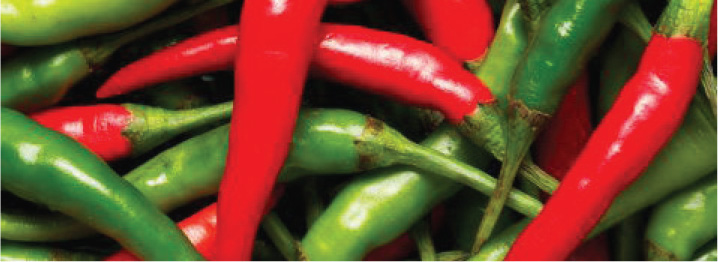
15.1 Genotype and Phenotype 15-1
Genotype is the genetic makeup of a cell or organism; phenotype is its observed characteristics. 15-1
The effect of a genotype often depends on several factors. 15-2
Some genetic differences are major risk factors for disease. 15-3
Not all genetic differences are harmful. 15-3
A few genetic differences are beneficial. 15-5
15.2 Genetic Variation and Individual Uniqueness 15-6
Areas of the genome with variable numbers of tandem repeats are useful in DNA typing. 15-6
Some polymorphisms add or remove restriction sites in the DNA. 15-7
15.3 Genomewide Studies of Genetic Variation 15-8
Single-nucleotide polymorphisms (SNPs) are single base changes in the genome. 15-8
? How can genetic risk factors be detected? 15-9
SNPs can be detected by DNA microarrays. 15-9
Copy-number variation constitutes a significant proportion of genetic variation. 15-10
15.4 Genetic Variation in Chromosomes 15-11
Nondisjunction in meiosis results in extra or missing chromosomes. 15-11
Some human disorders result from nondisjunction. 15-12
HOW DO WE KNOW?
What is the genetic basis of Down syndrome? 15-13
Extra sex chromosomes have fewer effects than extra autosomes. 15-14
Nondisjunction is a major cause of spontaneous abortion. 15-15
CHAPTER 16 MENDELIAN INHERITANCE 16-1
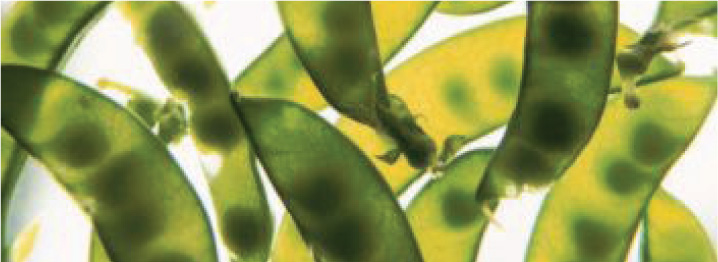
16.1 Early Theories of Inheritance 16-1
Early theories of heredity predicted the transmission of acquired characteristics. 16-1
Belief in blending inheritance discouraged studies of hereditary transmission. 16-2
16.2 The Foundations of Modern
Transmission Genetics 16-3
Mendel’s experimental organism was the garden pea. 16-3
In crosses, one of the traits was dominant in the offspring. 16-4
16.3 Segregation: Mendel’s Key Discovery 16-5
Genes come in pairs that segregate in the formation of reproductive cells. 16-6
The principle of segregation was tested by predicting the outcome of crosses. 16-7
A testcross is a mating to an individual with the homozygous recessive genotype. 16-7
Segregation of alleles reflects the separation of chromosomes in meiosis. 16-8
Dominance is not universally observed. 16-8
The principles of transmission genetics are statistical and stated in terms of probabilities. 16-9
Mendelian segregation preserves genetic variation. 16-10
16.4 Independent Assortment 16-10
Independent assortment is observed when genes segregate independently of one another. 16-11
Independent assortment reflects the random alignment of chromosomes in meiosis. 16-12
HOW DO WE KNOW?
How are simple traits inherited? 16-12
Phenotypic ratios can be modified by interactions between genes. 16-14
16.5 Patterns of Inheritance Observed in Family Histories 16-14
Dominant traits appear in every generation. 16-15
Recessive traits skip generations. 16-16
Many genes have multiple alleles. 16-16
Incomplete penetrance and variable expression can obscure inheritance patterns. 16-17
? How do genetic tests identify disease risk factors? 16-17
CHAPTER 17 BEYOND MENDEL
Sex Chromosomes, Linkage, and Organelles 17-1

17.1 The X and Y Sex Chromosomes 17-1
In many animals, sex is genetically determined and associated with chromosomal differences. 17-2
Segregation of the sex chromosomes predicts a 1:1 ratio of females to males. 17-2
17.2 Inheritance of Genes in the X Chromosome 17-3
X-linked inheritance was discovered through studies of male fruit flies with white eyes. 17-3
Genes in the X chromosome exhibit a “crisscross” inheritance pattern. 17-4
X-linkage provided the first experimental evidence that genes are in chromosomes. 17-6
Genes in the X chromosome show characteristic patterns in human pedigrees. 17-7
17.3 Genetic Linkage and Recombination 17-8
Nearby genes in the same chromosome show linkage. 17-8
Recombination frequency is a measure of the distance between linked genes. 17-10
Genetic mapping assigns a location to each gene along a chromosome. 17-11
Genetic risk factors for disease can be localized by genetic mapping. 17-11
HOW DO WE KNOW?
Can recombination be used to construct a genetic map of a chromosome? 17-12
17.4 Inheritance of Genes in the Y Chromosome 17-13
Y-linked genes are transmitted from father to son to grandson. 17-13
? How can the Y chromosome be used to trace ancestry? 17-14
17.5 Inheritance of Mitochondrial and Chloroplast DNA 17-15
Mitochondrial and chloroplast genomes often show uniparental inheritance. 17-15
Maternal inheritance is characteristic of mitochondrial diseases. 17-15
? How can mitochondrial DNA be used to trace ancestry? 17-16
CHAPTER 18 THE GENETIC AND ENVIRONMENTAL BASIS OF COMPLEX TRAITS 18-1
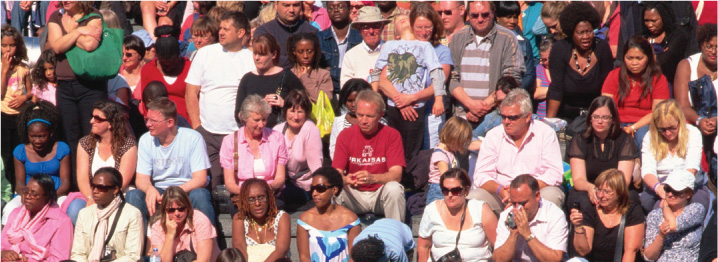
18.1 Heredity and Environment 18-2
Complex traits are affected by the environment. 18-2
Complex traits are affected by multiple genes. 18-3
The relative importance of genes and environment can be determined by differences among individuals. 18-4
Genetic and environmental effects can interact in unpredictable ways. 18-5
18.2 Resemblance Among Relatives 18-6
For complex traits, offspring resemble parents but show regression toward the mean. 18-6
Heritability is the proportion of the total variation due to genetic differences among individuals. 18-7
18.3 Twin Studies 18-8
Identical twins share the same genotype. 18-8
Twin studies help separate the effects of genes and environment in differences among individuals. 18-9
HOW DO WE KNOW?
What is the relative importance of genes and the environment for complex traits? 18-10
18.4 Complex Traits in Health and Disease 18-10
Most common diseases and birth defects are affected by many genes that each have relatively small effects. 18-11
Human height is affected by hundreds of genes. 18-12
? Can personalized medicine lead to effective treatments of common diseases? 18-12
CHAPTER 19 GENETIC AND EPIGENETIC REGULATION 19-1
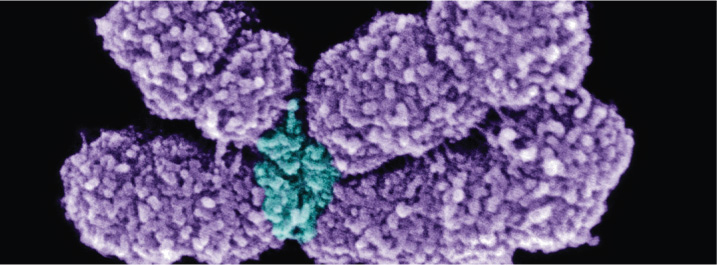
19.1 Chromatin to Messenger RNA in Eukaryotes 19-2
Gene expression can be influenced by chemical modification of DNA or histones. 19-2
Gene expression can be regulated at the level of an entire chromosome. 19-3
Transcription is a key control point in gene expression. 19-5
RNA processing is also important in gene regulation. 19-6
19.2 Messenger RNA to Phenotype in Eukaryotes 19-8
Small regulatory RNAs inhibit translation or promote RNA degradation. 19-8
Translational regulation controls the rate, timing, and location of protein synthesis. 19-9
Protein structure and chemical modification modulate protein effects on phenotype. 19-10
? How do lifestyle choices affect expression of your personal genome? 19-10
19.3 Transcriptional Regulation in Prokaryotes 19-10
Transcriptional regulation can be positive or negative. 19-11
Lactose utilization in E. coli is the pioneering example of transcriptional regulation. 19-12
HOW DO WE KNOW?
How does lactose lead to the production of active ß-galactosidase enzyme? 19-12
The repressor protein binds with the operator and prevents transcription, but not in the presence of lactose. 19-13
The function of the lactose operon was revealed by genetic studies. 19-14
The lactose operon is also positively regulated by CRP-cAMP. 19-14
Transcriptional regulation determines the outcome of infection by a bacterial virus. 19-15
VISUAL SYNTHESIS: Virus: A Genome in Need of a Cell 19-18
CHAPTER 20 GENES AND DEVELOPMENT 20-1
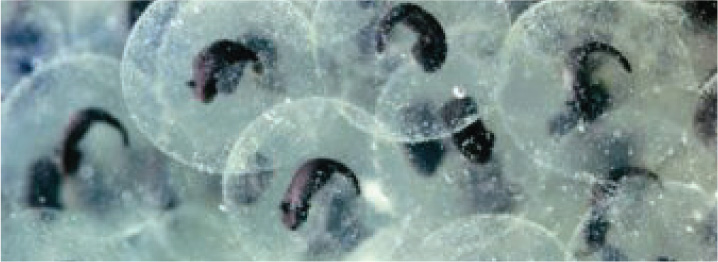
20.1 Genetic Programs of Development 20-1
The fertilized egg is a totipotent cell. 20-2
Cellular differentiation increasingly restricts alternative fates. 20-2
HOW DO WE KNOW?
HOW do stem cells lose their ability to differentiate into any cell type? 20-3
? Can cells with your personal genome be reprogrammed for new therapies? 20-5
20.2 Hierarchical Control of Development 20-5
Drosophila development proceeds through egg, larval, and adult stages. 20-5
The egg is a highly polarized cell. 20-6
Development proceeds by progressive regionalization and specification. 20-8
Homeotic genes determine where different body parts develop in the organism. 20-9
20.3 Evolutionary Conservation of Key Transcription Factors in Development 20-11
Animals have evolved a wide variety of eyes. 20-11
Pax6 is a master regulator of eye development. 20-12
20.4 Combinatorial Control in Development 20-13
Floral differentiation is a model for plant development. 20-13
The identity of the floral organs is determined by combinatorial control. 20-14
20.5 Cell Signaling in Development 20-15
A signaling molecule can cause multiple responses in the cell. 20-16
Developmental signals are amplified and expanded. 20-16
VISUAL SYNTHESIS Genetic Variation and Inheritance 20-18
? CASE 4 Malaria: Co-evolution of Humans and a Parasite C4-2
CHAPTER 21 EVOLUTION
How Genotypes and Phenotypes Change over Time 21-1
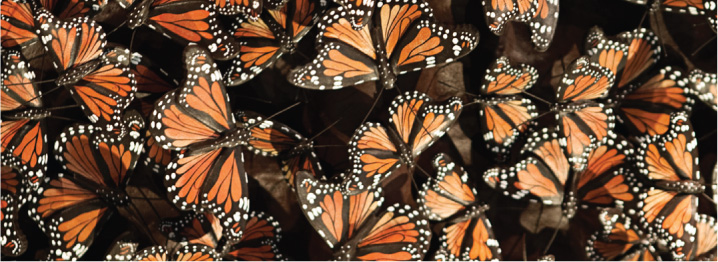
21.1 Genetic Variation 21-1
Population genetics is the study of patterns of genetic variation. 21-1
Mutation and recombination are the two sources of genetic variation. 21-2
Mutations can be harmful, neutral, or beneficial. 21-2
21.2 Measuring Genetic Variation 21-3
To understand patterns of genetic variation, we require information about allele frequencies. 21-3
Early population geneticists relied on observable traits to measure variation. 21-4
Gel electrophoresis facilitates the detection of genetic variation. 21-4
DNA sequencing is the gold standard for measuring genetic variation. 21-4
HOW DO WE KNOW?
How is genetic variation measured? 21-5
21.3 Evolution and the Hardy-Weinberg Equilibrium 21-6
Evolution is a change in allele or genotype frequency over time. 21-6
The Hardy-Weinberg equilibrium describes situations in which allele and genotype frequencies do not change. 21-6
The Hardy-Weinberg equilibrium translates allele frequencies into genotype frequencies. 21-7
The Hardy-Weinberg equilibrium is the starting point for population genetic analysis. 21-8
21.4 Natural Selection 21-8
Natural selection brings about adaptations. 21-8
The Modern Synthesis is a marriage between Mendelian genetics and Darwinian evolution. 21-9
Natural selection increases the frequency of advantageous mutations and decreases the frequency of deleterious mutations. 21-10
? What genetic differences have made some individuals more and some less susceptible to malaria? 21-10
Natural selection can be stabilizing, directional, or disruptive. 21-10
HOW DO WE KNOW?
How far can artificial selection be taken? 21-12
Sexual selection increases an individual’s reproductive success. 21-13
21.5 Migration, Mutation, and Genetic Drift 21-13
Migration reduces genetic variation between populations. 21-13
Mutation increases genetic variation. 21-13
Genetic drift is particularly important in small populations. 21-13
21.6 Molecular Evolution 21-14
The extent of sequence difference between species is a function of the time since the species diverged. 21-15
The rate of the molecular clock varies. 21-15
CHAPTER 22 SPECIES AND SPECIATION 22-1
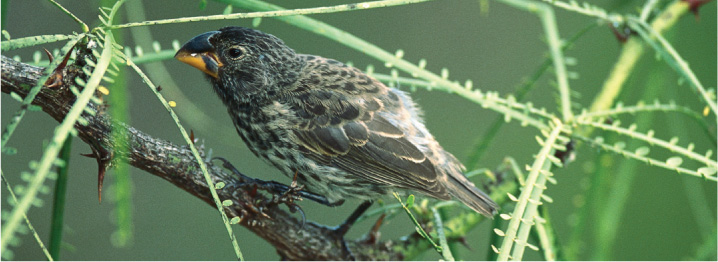
22.1 The Biological Species Concept 22-1
The species is the fundamental evolutionary unit. 22-1
Reproductive isolation is the key to the biological species concept (BSC). 22-2
The BSC is more useful in theory than in practice. 22-2
The BSC does not apply to asexual or extinct organisms. 22-3
Ring species and hybridization complicate the BSC. 22-4
Ecology and evolution can extend the BSC. 22-4
22.2 Reproductive Isolation 22-5
Pre-zygotic isolating factors occur before egg fertilization. 22-5
Post-zygotic isolating factors occur after egg fertilization. 22-6
22.3 Speciation 22-6
Speciation is a by-product of the genetic divergence of separated populations. 22-6
Allopatric speciation is speciation that results from the geographical separation of populations. 22-6
HOW DO WE KNOW?
Can a vicariance event cause speciation? 22-8
Co-speciation is speciation that occurs in response to speciation in another species. 22-11
? How did malaria come to infect humans? 22-11
Can sympatric populations—those not geographically separated—undergo speciation? 22-12
Speciation can occur instantaneously. 22-13
22.4 Speciation and Selection 22-15
Speciation can occur with or without natural selection. 22-15
Natural selection can enhance reproductive isolation. 22-15
VISUAL SYNTHESIS Speciation 22-16
CHAPTER 23 EVOLUTIONARY PATTERNS
Phylogeny and Fossils 23-1

23.1 Reading a Phylogenetic Tree 23-1
Phylogenetic trees provide hypotheses of evolutionary relationships. 23-2
The search for sister groups lies at the heart of phylogenetics. 23-3
A monophyletic group consists of a common ancestor and all its descendants. 23-4
Taxonomic classifications are information storage and retrieval systems. 23-4
23.2 Building a Phylogenetic Tree 23-5
Homology is similarity by common descent. 23-5
Shared derived characters enable biologists to reconstruct evolutionary history. 23-6
The simplest tree is often favored among multiple possible trees. 23-6
Molecular data complement comparative morphology in reconstructing phylogenetic history. 23-8
HOW DO WE KNOW?
Did an HIV-positive dentist spread the AIDS virus to his patients? 23-10
Phylogenetic trees can help solve practical problems. 23-10
23.3 The Fossil Record 23-11
Fossils provide unique information. 23-11
Fossils provide a selective record of past life. 23-12
Geological data indicate the age and environmental setting of fossils. 23-14
Fossils can contain unique combinations of characters. 23-16
HOW DO WE KNOW?
Can fossils bridge the evolutionary gap between fish and tetrapod vertebrates? 23-18
Rare mass extinctions have altered the course of evolution. 23-18
23.4 Comparing Evolution’s Two Great Patterns 23-19
Phylogeny and fossils complement each other. 23-19
Agreement between phylogenies and the fossil record provides strong evidence of evolution. 23-19
CHAPTER 24 HUMAN ORIGINS AND EVOLUTION 24-1
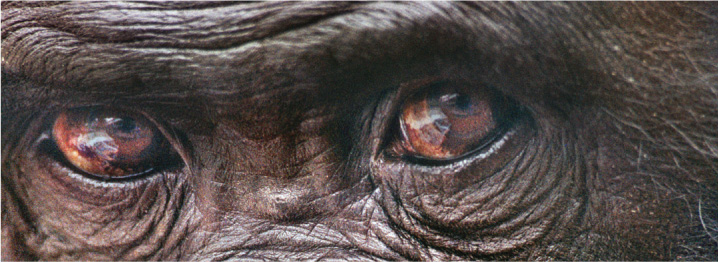
24.1 The Great Apes 24-1
Comparative anatomy shows that the human lineage branches off the great apes tree. 24-1
Molecular analysis reveals that our lineage split from the chimpanzee lineage about 5-7 million years ago. 24-3
HOW DO WE KNOW?
How closely related are humans and chimpanzees? 24-3
The fossil record gives us direct information about our evolutionary history. 24-4
24.2 African Origins 24-6
Studies of mitochondrial DNA reveal that modern humans evolved in Africa. 24-6
HOW DO WE KNOW?
When and where did the most recent common ancestor of all living humans live? 24-6
Neanderthals disappear from the fossil record as modern humans appear but have contributed to the modern human gene pool. 24-8
24.3 Distinct Features of Our Species 24-9
Bipedalism was a key innovation. 24-9
Adult humans share many features with juvenile chimpanzees. 24-10
Humans have large brains relative to body size. 24-11
The human and chimpanzee genomes help us identify genes that make us human. 24-12
24.4 Human Genetic Variation 24-12
The prehistory of our species has had an impact on the distribution of genetic variation. 24-13
The recent spread of modern humans means that there are few genetic differences between groups. 24-14
Some human differences have likely arisen by natural selection. 24-14
? What human genes are under selection for resistance to malaria? 24-15
24.5 Culture, Language, and Consciousness 24-15
Culture changes rapidly. 24-15
Is culture uniquely human? 24-16
Is language uniquely human? 24-17
Is consciousness uniquely human? 24-18
PART 2 FROM ORGANISMS TO THE
ENVIRONMENT
CHAPTER 25 CYCLING CARBON 25-1

25.1 The Short-Term Carbon Cycle 25-1
Photosynthesis and respiration are key processes in short-term carbon cycling. 25-2
The regular oscillation of CO2 reflects the seasonality of photosynthesis in the Northern Hemisphere. 25-2
Human activities play an important role in the modern carbon cycle. 25-3
HOW DO WE KNOW?
How much CO2 was in the atmosphere 1000 years ago? 25-3
Carbon isotopes show that much of the CO2 added to air over the past half century comes from burning fossil fuels. 25-4
HOW DO WE KNOW?
What is the major source of the carbon dioxide that has accumulated in Earth’s atmosphere over the last two centuries? 25-4
25.2 The Long-Term Carbon Cycle 25-6
Reservoirs and fluxes are key in long-term carbon cycling. 25-6
Physical processes add and remove CO2 from the atmosphere. 25-7
Records of atmospheric composition over 400,000 years show periodic shifts in CO2 content. 25-9
Variations in atmospheric CO2 over hundreds of millions of years reflect plate tectonics and evolution. 25-11
25.3 The Carbon Cycle, Ecology, and Evolution 25-12
Food webs trace the movement of carbon through communities. 25-12
Trophic pyramids trace the flow of energy through communities. 25-13
The diversity of photosynthetic organisms reflects adaptation to a wide range of environments. 25-13
The diversity of respiring organisms reflects many sources of food. 25-14
The carbon cycle provides a framework for understanding life’s evolutionary history. 25-14
? CASE 5 The Human Microbiome: Diversity Within C5-1
CHAPTER 26 BACTERIA AND ARCHAEA 26-1
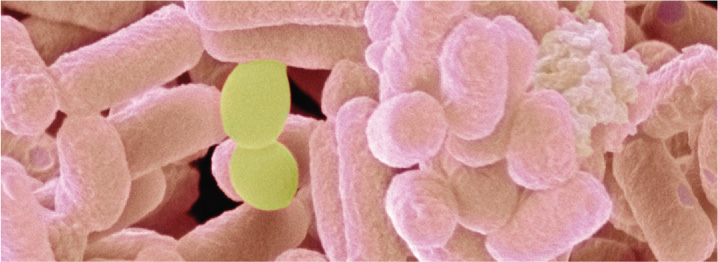
26.1 Two Prokaryotic Domains 26-1
The bacterial cell is small but powerful. 26-1
Diffusion limits cell size in bacteria. 26-2
Horizontal gene transfer promotes genetic diversity in bacteria. 26-4
The Archaea form a second prokaryotic domain. 26-5
26.2 An Expanded Carbon Cycle 26-6
Many photosynthetic bacteria do not produce oxygen. 26-7
Many bacteria respire without oxygen. 26-8
Photoheterotrophs obtain energy from light but obtain carbon from preformed organic molecules. 26-8
Chemoautotrophy is a uniquely prokaryotic metabolism. 26-9
26.3 Other Biogeochemical Cycles 26-10
Bacteria and archaeons dominate Earth’s sulfur cycle. 26-10
The nitrogen cycle is also driven by bacteria and archaeons. 26-10
26.4 The Diversity of Bacteria 26-12
Bacterial phylogeny is a work in progress. 26-12
HOW DO WE KNOW?
How many kinds of bacterium live in the oceans? 26-13
What, if anything, is a bacterial species? 26-14
Proteobacteria are the most diverse bacteria. 26-15
The gram-positive bacteria include organisms that cause and cure disease. 26-15
Photosynthesis is widely distributed on the bacterial tree. 26-15
26.5 The Diversity of Archaea 26-16
The archaeal tree has anaerobic, hyperthermophilic organisms near its base. 26-17
The Crenarchaeota and Euryarchaeota both include acid-loving microorganisms. 26-18
Euryarchaeote archaeons include heat-loving, methane-producing, and salt-loving microorganisms. 26-18
Thaumarchaeota may be the most abundant cells in the oceans. 26-18
HOW DO WE KNOW?
How abundant are archaeons in the oceans? 26-1 9
26.6 The Evolutionary History of Prokaryotes 26-20
Life originated early in our planet’s history. 26-20
Prokaryotes have coevolved with eukaryotes. 26-21
? How do intestinal bacteria influence human health? 26-22
CHAPTER 27 EUKARYOTIC CELLS
Origins and Diversity 27-1

27.1 The Eukaryotic Cell: A Review 27-1
Internal protein scaffolding and dynamic membranes organize the eukaryotic cell. 27-1
In eukaryotic cells, energy metabolism is localized in mitochondria and chloroplasts. 27-2
The organization of the eukaryotic genome also helps explain eukaryotic diversity. 27-2
Sex promotes genetic diversity in eukaryotes and gives rise to distinctive life cycles. 27-3
27.2 Eukaryotic Origins 27-4
? What role did symbiosis play in the origin of chloroplasts? 27-4
HOW DO WE KNOW?
What is the evolutionary origin of chloroplasts? 27-5
? What role did symbiosis play in the origin of mitochondria? 27-6
? How did the eukaryotic cell originate? 27-7
In the oceans, many single-celled eukaryotes harbor symbiotic bacteria. 27-9
27.3 Eukaryotic Diversity 27-9
Our own group, the opisthokonts, is the most diverse eukaryotic superkingdom. 27-10
Amoebozoans include slime molds that produce multicellular structures. 27-12
Archaeplastids are photosynthetic organisms, including land plants. 27-13
Other photosynthetic organisms occur in the stramenopiles and alveolates. 27-15
Photosynthesis spread through eukaryotes by repeated endosymbioses involving eukaryotic algae. 27-16
HOW DO WE KNOW?
How did photosynthesis spread through the Eukarya? 27-18
The first branch of the eukaryotic tree may separate animals and slime molds from plants and diatoms. 27-19
27.4 The Fossil Record of Protists 27-20
Fossils show that eukaryotes existed at least 1800 million years ago. 27-20
Protists have continued to diversify during the age of animals. 27-21
CHAPTER 28 BEING MULTICELLULAR 28-1
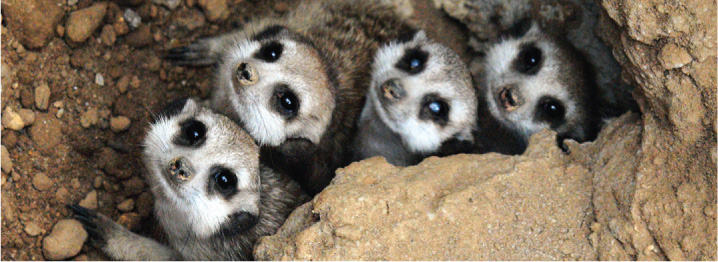
28.1 The Phylogenetic Distribution of Multicellular Organisms 28-1
Simple multicellularity is widespread among eukaryotes. 28-1
Complex multicellularity evolved several times. 28-3
28.2 Diffusion vs. Bulk Transport 28-4
Diffusion is effective only over short distances. 28-4
Animals achieve large size by circumventing limits imposed by diffusion. 28-4
Complex multicellular organisms have structures specialized for bulk transport. 28-5
28.3 How to Build a Multicellular Organism 28-6
Complex multicellularity requires adhesion between cells. 28-6
HOW DO WE KNOW?
How do bacteria influence the life cycles of choanoflagellates? 28-6
How did animal cell adhesion originate? 28-7
Complex multicellularity requires communication between cells. 28-7
Complex multicellularity requires a genetic program for coordinated growth and cell differentiation. 28-8
28.4 Variations on a Theme: Plants vs. Animals 28-10
Cell walls shape patterns of growth and development in plants. 28-10
Animal cells can move relative to one another. 28-11
28.5 The Evolution of Complex Multicellularity 28-12
Complex multicellularity appeared in the oceans 575 to 555 million years ago. 28-12
Oxygen is necessary for complex multicellular life. 28-13
Land plants evolved from green algae that could carry out photosynthesis on land. 28-14
Regulatory genes have played an important role in the evolution of complex multicellular organisms. 28-15
HOW DO WE KNOW?
What controls color pattern in butterfly wings? 28-15
? CASE 6 Agriculture: Feeding a Growing Population C6-2
CHAPTER 29 PLANT STRUCTURE AND FUNCTION
Moving Photosynthesis onto Land 29-1

29.1 Plant Structure and Function: An Evolutionary Perspective 29-1
29.2 The Leaf: Acquiring CO2 While Avoiding Dessication 29-2
CO2 uptake results in water loss. 29-3
The cuticle restricts water loss from leaves but inhibits the uptake of CO2. 29-4
Stomata allow leaves to regulate water loss and carbon gain. 29-5
CAM plants use nocturnal CO2 storage to avoid water loss during the day. 29-6
C4 plants suppress photorespiration. 29-7
HOW DO WE KNOW?
How do we know that C4 photosynthesis suppresses photorespiration? 29-8
29.3 The Stem: Transport of Water Through Xylem 29-8
Xylem provides a low-resistance pathway for the movement of water. 29-9
Water is pulled through xylem by an evaporative pump. 29-10
HOW DO WE KNOW?
How large are the forces that allow leaves to pull water from the soil? 29-10
The structure of xylem conduits reduces the risks of collapse and cavitation. 29-11
29.4 The Stem: Transport of Carbohydrates Through Phloem 29-12
Carbohydrates are pushed through phloem by an osmotic pump. 29-13
Phloem feeds both the plant and the rhizosphere. 29-14
29.5 The Root: Uptake of Water and Nutrients from the Soil 29-15
Nutrient uptake by roots is highly selective. 29-15
Nutrient uptake requires energy. 29-16
Mycorrhizae enhance the uptake of phosphorus. 29-17
Symbiotic nitrogen-fixing bacteria supply nitrogen to both plants and ecosystems. 29-17
? How has nitrogen availability influenced agricultural productivity? 29-18
CHAPTER 30 PLANT REPRODUCTION
Finding Mates and Dispersing Young 30-1

30.1 The Plant Life Cycle and Evolution of Pollen and Seeds 30-1
The algal sister groups of land plants have one multicellular generation in their life cycle. 30-2
Bryophytes illustrate how the alternation of generations allows the dispersal of spores in the air. 30-2
Vascular plants evolved a large photosynthetic sporophyte generation. 30-4
In seed plants, the transport of pollen in air allows fertilization to occur in the absence of external sources of water. 30-6
Seeds enhance dispersal and establishment of the next sporophyte generation. 30-8
30.2 Flowering Plants 30-9
Flowers are reproductive shoots specialized for the production, transfer, and receipt of pollen. 30-9
The diversity of floral morphology is related to modes of pollination. 30-10
Angiosperms have mechanisms to increase outcrossing. 30-12
HOW DO WE KNOW?
Can pollinator shifts enhance rates of species formation? 30-13
Angiosperms delay provisioning their ovules until after fertilization. 30-15
Fruits enhance the dispersal of seeds. 30-15
30.3 Timing of Reproductive Events 30-17
Flowering time is affected by day length. 30-17
Photoreceptors enable plants to measure day length. 30-17
Vernalization prevents plants from flowering until winter has passed. 30-18
Dormant seeds can delay germination if they detect the presence of plants overhead. 30-18
HOW DO WE KNOW?
How do plants measure day length? 30-19
HOW DO WE KNOW?
How do seeds detect the presence of plants growing overhead? 30-20
? What is the basis for the spectacular increases in the yield of cereal grains during the Green Revolution? 30-21
30.4 Vegetative Reproduction 30-22
CHAPTER 31 PLANT GROWTH AND DEVELOPMENT
Building the Plant Body 31-1
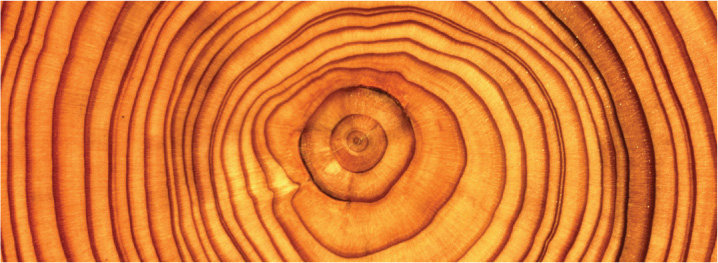
31.1 Shoot Growth and Development 31-2
Shoots grow by adding new cells at their tips. 31-2
Stem elongation occurs primarily in a zone just below the apical meristem where new cells elongate. 31-3
The shoot apical meristem controls the production and arrangement of leaves. 31-4
The development of new apical meristems allows stems to branch. 31-5
Flowers grow from and consume shoot meristems. 31-6
31.2 Plant Hormones 31-6
Hormones affect the growth and differentiation of plant cells. 31-7
Auxin transport guides the development of vascular connections between leaves and stems. 31-8
? What is the developmental basis for the shorter stems of high-yielding rice and wheat? 31-9
Branching is affected by multiple hormones. 31-10
31.3 Secondary Growth 31-10
Shoots produce two types of lateral meristem. 31-10
The vascular cambium produces secondary xylem and phloem. 31-11
The cork cambium produces an outer protective layer. 31-12
Wood has both mechanical and transport functions. 31-12
31.4 Root Growth and Development 31-13
Roots grow by producing new cells at their tips. 31-14
The formation of new root apical meristems allows roots to branch. 31-15
The structures and functions of root systems are diverse. 31-15
31.5 The Environmental Context of Growth and Development 31-16
Plants orient the growth of their stems and roots by light and gravity. 31-17
HOW DO WE KNOW?
How do plants grow toward light? 31-17
Plants grow taller and branch less when light levels are low. 31-19
Roots elongate more and branch less when water is scarce. 31-19
Exposure to wind results in shorter and stronger stems. 31-20
Plants use day length as a cue to prepare for winter. 31-20
CHAPTER 32 PLANT DEFENSE
Keeping the World Green 32-1
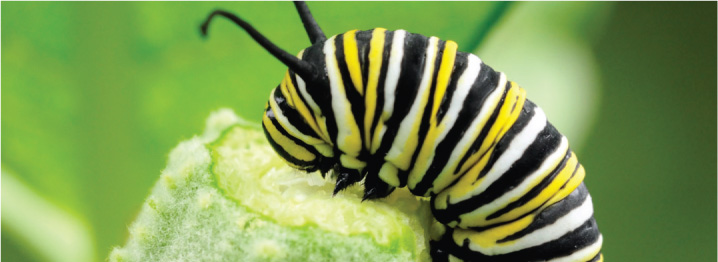
32.1 Protection Against Pathogens 32-1
Plant pathogens infect and exploit host plants by a variety of mechanisms. 32-2
An innate immune system allows plants to detect and respond to pathogens. 32-3
Plants respond to infections by isolating infected regions. 32-4
Mobile signals trigger defenses in uninfected tissues. 32-5
HOW DO WE KNOW?
Can plants develop immunity to specific pathogens? 32-6
Plants defend against viral infections by producing siRNA. 32-6
A pathogenic bacterium provides a way to modify plant genomes. 32-7
32.2 Defense Against Herbivores 32-8
Plants use mechanical and chemical defenses to avoid being eaten. 32-8
Diverse chemical compounds deter herbivores. 32-9
Some plants provide food and shelter for ants, which actively defend them. 32-11
Grasses can regrow quickly following grazing by mammals. 32-12
32.3 Allocating Resources to Defense 32-13
Plants can sense and respond to herbivores. 32-13
Plants produce volatile signals that attract insects that prey upon herbivores. 32-14
Nutrient-rich environments select for plants that allocate more resources to growth than to defense. 32-14
HOW DO WE KNOW?
Can plants communicate? 32-14
Exposure to multiple threats can lead to trade-offs. 32-16
32.4 Defense and Plant Diversity 32-16
Pathogens, herbivores, and seed predators can increase plant biodiversity. 32-16
The evolution of new defenses may allow plants to diversify. 32-17
? Can modifying plants genetically protect crops from herbivores and pathogens? 32-17
CHAPTER 33 PLANT DIVERSITY 33-1
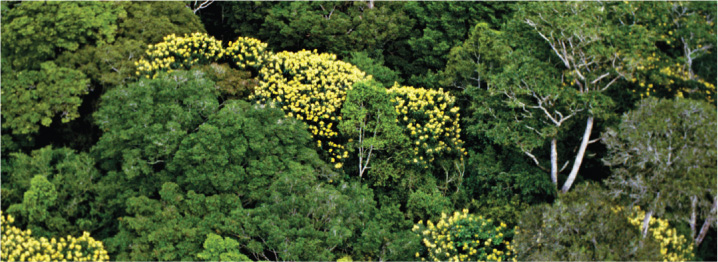
33.1 Plant Diversity: An Evolutionary Overview 33-1
33.2 Bryophytes 33-2
Bryophytes are small, simple, and tough. 33-3
Bryophytes exhibit several cases of convergent evolution with the vascular plants. 33-4
Sphagnum moss plays an important role in the global carbon cycle. 33-5
33.3 Spore-Dispersing Vascular Plants 33-5
Rhynie cherts provide a window into the early evolution of vascular plants. 33-5
Lycophytes are the sister group of all other vascular plants. 33-6
Ancient lycophytes included giant trees that dominated coal swamps about 320 million years ago. 33-7
HOW DO WE KNOW?
Did woody plants evolve more than once? 33-8
Ferns and horsetails are morphologically and ecologically diverse. 33-9
An aquatic fern contributes to rice production. 33-10
33.4 Gymnosperms 33-11
Cycads and ginkgos are the earliest diverging groups of living gymnosperms. 33-11
Conifers are forest giants that thrive in dry and cold climates. 33-13
Gnetophytes are gymnosperms that have independently evolved xylem vessels and double fertilization. 33-14
33.5 Angiosperms 33-14
Angiosperm diversity remains a puzzle. 33-15
Early diverging angiosperms have low diversity. 33-15
Monocots develop according to a novel body plan. 33-16
HOW DO WE KNOW?
When did grasslands expand over the land surface? 33-18
Eudicots are the most diverse group of angiosperms. 33-19
? What can be done to protect the genetic diversity of crop species? 33-20
VISUAL SYNTHESIS Angiosperms: Structure and Function 33-22
CHAPTER 34 FUNGI
Structure, Function, and Diversity 34-1

34.1 Growth and Nutrition 34-1
Hyphae permit fungi to explore their environment for food resources. 34-2
Fungi transport materials within their hyphae. 34-2
Not all fungi produce hyphae. 34-2
Fungi are principal decomposers of plant tissues. 34-3
Fungi are important plant and animal pathogens. 34-4
Many fungi form symbiotic associations with plants and animals. 34-5
Lichens are symbioses between a fungus and a green alga or a cyanobacterium. 34-6
34.2 Reproduction 34-7
Fungi proliferate and disperse using spores. 34-7
Multicellular fruiting bodies facilitate the dispersal of sexually produced spores. 34-8
HOW DO WE KNOW?
What determines the shape of fungal spores that are ejected into the air? 34-9
The fungal life cycle often includes a stage in which haploid cells fuse, but nuclei do not. 34-10
Genetically distinct mating types promote outcrossing. 34-11
Fungi that lack sexual reproduction have other means of generating genetic diversity. 34-11
34.3 Diversity 34-12
Fungi are highly diverse. 34-12
Fungi evolved from aquatic, unicellular, and flagellated ancestors. 34-12
Zygomycetes produce hyphae undivided by septa. 34-13
Glomeromycetes form endomycorrhizae. 34-14
The Dikarya produce regular septa during mitosis. 34-14
Ascomycetes are the most diverse group of fungi. 34-14
HOW DO WE KNOW?
Can a fungus influence the behavior of an ant? 34-16
Basidiomycetes include smuts, rusts, and mushrooms. 34-17
? How do fungi threaten global wheat production? 34-19
? CASE 7 Predator-Prey: A Game of Life and Death C7-1
CHAPTER 35 ANIMAL NERVOUS SYSTEMS 35-1
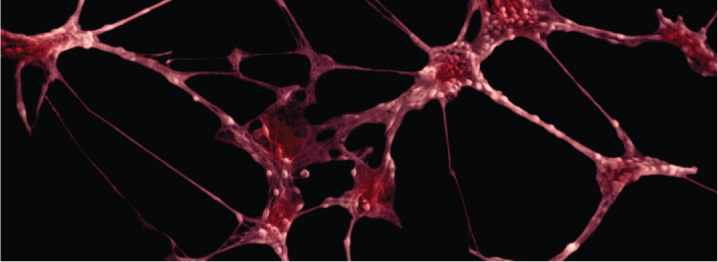
35.1 Nervous System Function and Evolution 35-1
Animal nervous systems have three types of nerve cell. 35-2
Nervous systems range from simple to complex. 35-2
? What body features arose as adaptations for successful predation? 35-4
35.2 Neuron Structure 35-4
Neurons share a common organization. 35-5
Neurons differ in size and shape. 35-5
Neurons are supported by other types of cell. 35-6
35.3 Neuron Function 35-6
The resting membrane potential is negative and results in part from the movement of potassium ions. 35-6
Neurons are excitable cells that transmit information by action potentials. 35-8
Neurons propagate action potentials along their axons by sequentially opening and closing adjacent Na+ and K+ ion channels. 35-8
HOW DO WE KNOW?
What is the resting membrane potential and what changes in electrical activity occur during an action potential? 35-11
Nerve cells communicate at synapses. 35-12
Signals between neurons can be excitatory or inhibitory. 35-13
35.4 Nervous System Organization 35-15
Nervous systems are organized into peripheral and central components. 35-15
Nervous systems have voluntary and involuntary components. 35-16
The nervous system helps to maintain homeostasis. 35-17
Simple reflex circuits provide rapid responses to stimuli. 35-18
CHAPTER 36 ANIMAL SENSORY SYSTEMS AND BRAIN FUNCTION 36-1
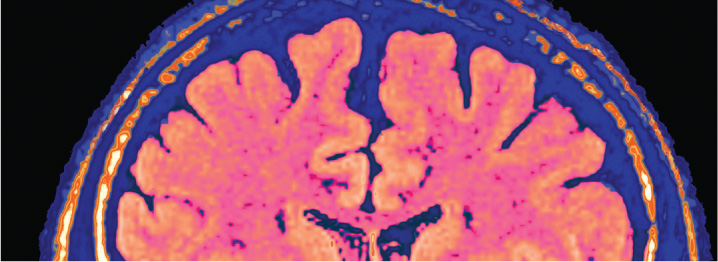
36.1 Animal Sensory Systems 36-1
Specialized sensory receptors detect diverse stimuli. 36-2
Stimuli are transmitted by changes in the firing rate of action potentials. 36-4
36.2 Smell and Taste 36-5
Smell and taste depend on chemoreception of molecules carried in the environment and in food. 36-5
36.3 Sensing Gravity, Movement, and Sound 36-6
Hair cells sense gravity and motion. 36-7
Hair cells detect the physical vibrations of sound. 36-8
? How have sensory systems evolved in predators and prey? 36-10
36.4 Vision 36-10
All animals use a similar photosensitive protein called opsin to detect light. 36-11
Animals see the world through different types of eyes. 36-11
The structure and function of the vertebrate eye underlie image processing. 36-13
Color vision detects different wavelengths of light. 36-14
Local sensory processing of light determines basic features of shape and movement. 36-15
HOW DO WE KNOW?
How does the retina process visual information? 36-16
36.5 Brain Organization and Function 36-17
The brain processes and integrates information received from different sensory systems. 36-17
The brain is divided into lobes with specialized functions. 36-18
Information is topographically mapped into the vertebrate cerebral cortex. 36-19
36.6 Memory and Cognition 36-20
The brain serves an important role in memory and learning. 36-20
Cognition involves brain information processing and decision making. 36-21
CHAPTER 37 ANIMAL MOVEMENT
Muscles and Skeletons 37-1
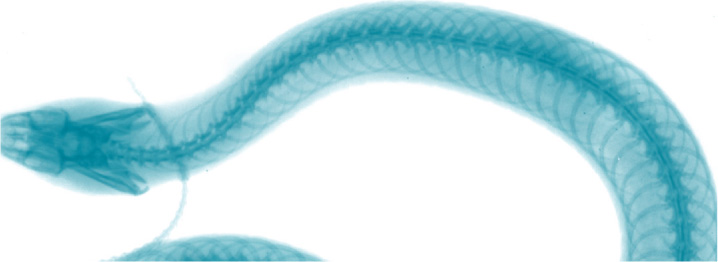
37.1 Muscles: Biological Motors That Generate
Force and Produce Movement 37-1
Muscles can be striated or smooth. 37-1
Skeletal muscle fibers are organized into repeating contractile units called sarcomeres. 37-2
Muscles contract by the sliding of myosin and actin filaments. 37-4
Calcium regulates actin-myosin interaction through excitation-contraction coupling. 37-6
Calmodulin regulates Ca2+ activation and relaxation of smooth muscle. 37-7
37.2 Muscle Contractile Properties 37-8
Muscle length affects actin-myosin overlap and generation of force. 37-8
HOW DO WE KNOW?
How does filament overlap affect force generation in muscles? 37-8
Muscle force and shortening velocity are inversely related. 37-9
Antagonist pairs of muscles produce reciprocal motions at a joint. 37-10
Muscle force is summed by an increase in stimulation frequency and the recruitment of motor units. 37-10
Skeletal muscles have slow-twitch and fasttwitch fibers. 37-11
? How do different types of muscle fiber affect the speed of predators and prey? 37-12
37.3 Animal Skeletons 37-13
Hydrostatic skeletons support animals by muscles that act on a fluid-filled cavity. 37-13
Exoskeletons provide hard external support and protection. 37-14
The rigid bones of vertebrate endoskeletons are jointed for motion and can be repaired if damaged. 37-15
37.4 Vertebrate Skeletons 37-16
Vertebrate bones form by intramembranous and endochondral ossification. 37-16
Joint shape determines range of motion and skeletal muscle organization. 37-17
Muscles exert forces by skeletal levers to produce joint motion. 37-18
CHAPTER 38 ANIMAL ENDOCRINE SYSTEMS 38-1
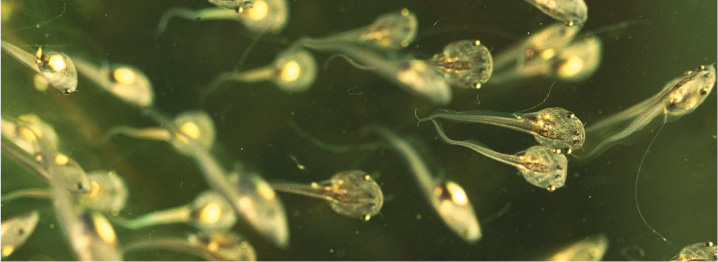
38.1 An Overview of Endocrine Function 38-1
The endocrine system helps to regulate an organism’s response to its environment. 38-1
The endocrine system is involved in growth and development. 38-2
HOW DO WE KNOW?
How are growth and development controlled in insects? 38-3
The endocrine system underlies homeostasis. 38-5
38.2 Properties of Hormones 38-7
Three main classes of hormone are peptide, amine, and steroid hormones. 38-7
Hormonal signals are typically amplified. 38-8
Hormones act specifically on cells with receptors that bind the hormone. 38-11
Hormones are evolutionarily conserved molecules with diverse functions. 38-11
38.3 The Vertebrate Endocrine System 38-12
The pituitary gland integrates diverse bodily functions by secreting hormones in response to signals from the hypothalamus. 38-13
Many targets of pituitary hormones are endocrine tissues that also release hormones. 38-14
Other endocrine organs have diverse functions. 38-15
? How does the endocrine system influence predators and prey? 38-15
38.4 Other Forms of Chemical Communication 38-16
Local chemical signals regulate neighboring target cells. 38-16
Pheromones are chemical compounds released into the environment to signal behavioral cues to other species members. 38-17
CHAPTER 39 ANIMAL CARDIOVASCULAR AND RESPIRATORY SYSTEMS 39-1
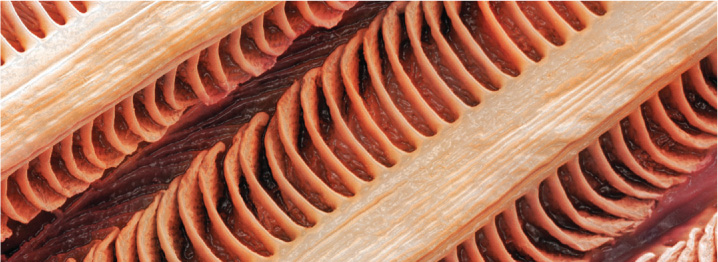
39.1 Delivery of Oxygen and Elimination of Carbon Dioxide 39-1
Diffusion governs gas exchange over short distances. 39-2
Bulk flow moves fluid over long distances. 39-2
39.2 Respiratory Gas Exchange 39-3
Many aquatic animals breathe through gills. 39-4
Insects breathe air through tracheae. 39-5
Terrestrial vertebrates breathe by tidal ventilation of internal lungs. 39-6
Mammalian lungs are well adapted for gas exchange. 39-7
The structure of bird lungs allows unidirectional airflow for increased oxygen uptake. 39-8
Voluntary and involuntary mechanisms control breathing. 39-9
39.3 Oxygen Transport by Hemoglobin 39-10
Hemoglobin is an ancient molecule with diverse roles related to oxygen binding and transport. 39-10
HOW DO WE KNOW?
What is the molecular structure of hemoglobin and myoglobin? 39-10
Hemoglobin reversibly binds oxygen. 39-11
Myoglobin stores oxygen, enhancing delivery to muscle mitochondria. 39-12
Many factors affect hemoglobin-oxygen binding. 39-12
39.4 Circulatory Systems 39-13
Circulatory systems have vessels of different sizes to facilitate bulk flow and diffusion. 39-15
Arteries are muscular, elastic vessels that carry blood away from the heart under high pressure. 39-15
Veins are thin-walled vessels that return blood to the heart under low pressure. 39-16
Compounds and fluid move across capillary walls by diffusion, filtration, and osmosis. 39-16
? How do hormones and nerves provide homeostatic regulation of blood flow as well as allow an animal to respond to stress? 39-17
39.5 The Evolution, Structure, and Function of the Heart 39-17
Fish have two-chambered hearts and a single circulatory system. 39-18
Amphibians and reptiles have more three-chambered hearts and partially divided circulations. 39-18
Mammals and birds have four-chambered hearts and fully divided pulmonary and systemic circulations. 39-19
Cardiac muscle cells are electrically connected to contract in synchrony. 39-20
Cardiac output is regulated by the autonomic nervous system. 39-21
CHAPTER 40 ANIMAL METABOLISM, NUTRITION, AND DIGESTION 40-1
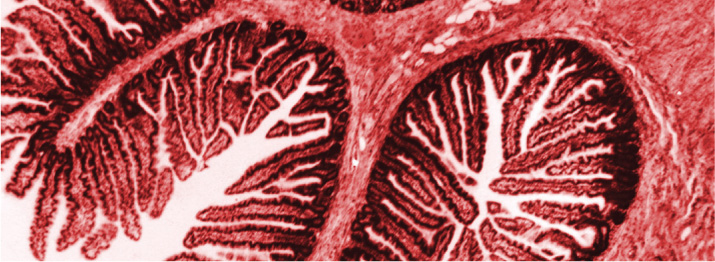
40.1 Patterns of Animal Metabolism 40-1
Animals rely on anaerobic and aerobic metabolism. 40-2
Metabolic rate varies with activity level. 40-3
? Does body temperature limit activity level in predators and prey? 40-5
Metabolic rate is affected by body size. 40-5
HOW DO WE KNOW?
How is metabolic rate affected by running speed and body size? 40-6
Metabolic rate is linked to body temperature. 40-7
40.2 Animal Nutrition and Diet 40-7
Energy balance is a form of homeostasis. 40-7
VISUAL SYNTHESIS Homeostasis and Thermoregulation 40-8
An animal’s diet must supply nutrients that it cannot synthesize. 40-10
40.3 Adaptations for Feeding 40-12
Suspension filter feeding is common in many aquatic animals. 40-12
Large aquatic animals apprehend prey by suction feeding and active swimming. 40-12
Jaws and teeth provide specialized food capture and mechanical breakdown of food. 40-13
40.4 Digestion and Absorption of Food 40-14
The digestive tract has regional specializations. 40-14
Digestion begins in the mouth. 40-15
The stomach is an initial storage and digestive chamber. 40-16
The small intestine is specialized for nutrient absorption. 40-17
The large intestine reabsorbs water and stores waste. 40-20
The lining of the digestive tract is composed of distinct layers. 40-21
Plant-eating animals have specialized digestive tracts that reflect their diets. 40-21
CHAPTER 41 ANIMAL RENAL SYSTEMS
Water and Waste 41-1
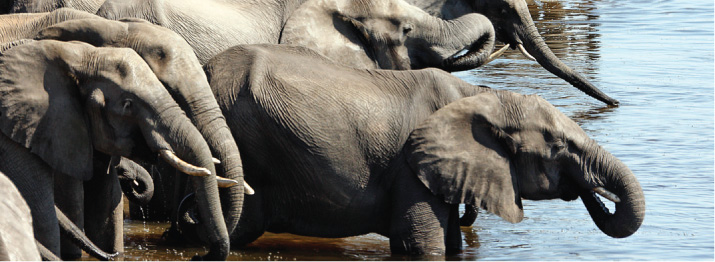
41.1 Water and Electrolyte Balance 41-1
Osmosis governs the movement of water across cell membranes. 41-2
Osmoregulation is the control of osmotic pressure inside cells and organisms. 41-3
Osmoconformers match their internal solute concentration to that of the environment. 41-4
Osmoregulators have internal solute concentrations that differ from that of their environment. 41-5
? Can the loss of water and electrolytes in exercise be exploited as a strategy to hunt prey? 41-6
41.2 Excretion of Wastes in Relation to Electrolyte Balance 41-7
The excretion of nitrogenous wastes is linked to an animal’s habitat and evolutionary history. 41-7
Excretory organs work by filtration, reabsorption, and secretion. 41-8
Animals have diverse excretory organs. 41-9
Vertebrates filter blood under pressure through paired kidneys. 41-10
41.3 Structure and Function of the Mammalian Kidney 41-12
The mammalian kidney has an outer cortex and inner medulla. 41-12
Glomerular filtration isolates wastes carried by the blood along with water and small solutes. 41-12
The proximal convoluted tubule reabsorbs solutes by active transport. 41-14
The loop of Henle acts as a countercurrent multiplier to create a concentration gradient from the cortex to the medulla. 41-14
HOW DO WE KNOW?
How does the mammalian kidney produce concentrated urine? 41-16
The distal convoluted tubule secretes additional wastes. 41-17
The final concentration of urine is determined in the collecting ducts and is under hormonal control. 41-17
The kidneys help regulate blood pressure and blood volume. 41-19
CHAPTER 42 ANIMAL REPRODUCTION AND DEVELOPMENT 42-1

42.1 The Evolutionary History of Reproduction 42-1
Asexual reproduction produces clones. 42-2
Sexual reproduction involves the formation and fusion of gametes. 42-3
Many species reproduce both sexually and asexually. 42-4
Exclusive asexuality is often an evolutionary dead end. 42-4
HOW DO WE KNOW?
Do bdelloid rotifers only reproduce asexually? 42-6
42.2 Movement onto Land and Reproductive Adaptations 42-7
Fertilization can take place externally or internally. 42-7
r-strategists and K-strategists differ in number of offspring and parental care. 42-8
Oviparous animals lay eggs, and viviparous animals give birth to live young. 42-8
42.3 Human Reproductive Anatomy and Physiology 42-9
The male reproductive system is specialized for the production and delivery of sperm. 42-9
The female reproductive system produces eggs and supports the developing embryo. 42-11
Hormones regulate the human reproductive system. 42-13
42.4 Gamete Formation to Birth in Humans 42-15
Male and female gametogenesis have shared and distinct features. 42-15
Fertilization occurs when a sperm fuses with an oocyte. 42-16
The first trimester includes cleavage, gastrulation, and organogenesis. 42-17
The second and third trimesters are characterized by fetal growth. 42-19
VISUAL SYNTHESIS Reproduction and Development 42-20
Childbirth is initiated by hormonal changes. 42-22
CHAPTER 43 ANIMAL IMMUNE SYSTEMS 43-1
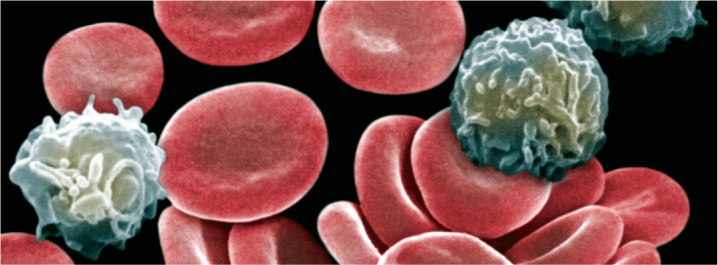
43.1 Innate Immunity 43-1
The skin and mucous membranes provide the first line of defense against infection. 43-2
Some cells act broadly against diverse pathogens. 43-3
Phagocytes recognize foreign molecules and send signals to other cells. 43-4
Inflammation is a coordinated response to tissue injury. 43-5
The complement system participates in the innate and adaptive immune systems. 43-6
43.2 Adaptive Immunity: B cells, Antibodies, and Humoral Immunity 43-7
B cells produce antibodies. 43-7
Mammals produce five classes of antibody with different biological functions. 43-8
Clonal selection is the basis for antibody specificity. 43-9
Clonal selection also explains immunological memory. 43-10
Genomic rearrangement creates antibody diversity. 43-10
HOW DO WE KNOW?
How is antibody diversity generated? 43-11
43.3 Adaptive Immunity: T cells and Cell-Mediated Immunity 43-13
T cells include helper and cytotoxic cells. 43-13
T cells have T cell receptors on their surface. 43-14
T cell activation requires the presence of antigen in association with MHC proteins. 43-14
The ability to distinguish between self and non-self is acquired during T cell maturation. 43-16
43.4 Three Infections: A Virus, Bacterium, and Eukaryote 43-16
The flu virus evades the immune system through antigenic drift and shift. 43-17
Tuberculosis is caused by a slow-growing, intracellular bacterium. 43-18
The malaria parasite uses antigenic variation to change surface molecules. 43-18
? CASE 8 Biodiversity Hotspots: Rain Forests and Coral Reefs C8-1
CHAPTER 44 ANIMAL DIVERSITY 44-1
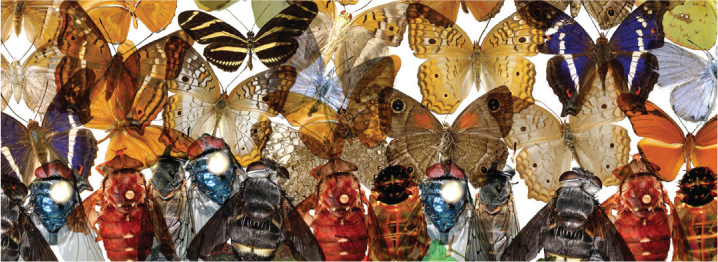
44.1 A Tree of Life for More than a Million Animal Species 44-1
Phylogenetic trees propose an evolutionary history of animals. 44-1
Nineteenth-century biologists grouped animals by anatomical and embryological features. 44-2
Molecular sequence comparisons have confirmed some relationships and raised new questions. 44-4
44.2 The Simplest Animals: Sponges, Cnidarians, Ctenophores, and Placozoans 44-5
Sponges are simple and widespread in the oceans. 44-5
Cnidarians are the architects of life’s largest constructions: coral reefs. 44-7
Ctenophores and placozoans represent the extremes of body organization among early branching animals. 44-8
44.3 Bilaterian Animals 44-11
Lophotrochozoans make up nearly half of all animal phyla, including the diverse and ecologically important annelids and mollusks. 44-11
Ecdysozoans include arthropods, the most diverse animals. 44-14
HOW DO WE KNOW?
How did the diverse feeding appendages of arthropods arise? 44-16
Deuterostomes include humans and other chordates, but also acorn worms and sea stars. 44-18
Chordates include vertebrates, cephalochordates, and tunicates. 44-19
44.4 Vertebrate Diversity 44-21
Fish are the earliest-branching and most diverse vertebrate animals. 44-22
The common ancestor of tetrapods had four limbs. 44-24
Amniotes evolved terrestrial eggs. 44-25
44.5 The Evolutionary History of Animals 44-27
Fossils and phylogeny show that animal forms were initially simple but rapidly evolved complexity. 44-27
The animal body plans we see today emerged during the Cambrian Period. 44-27
Animals began to colonize the land 420 million years ago. 44-28
? How have coral reefs changed through time? 44-29
VISUAL SYNTHESIS Diversity through Time 44-30
CHAPTER 45 ANIMAL BEHAVIOR 45-1
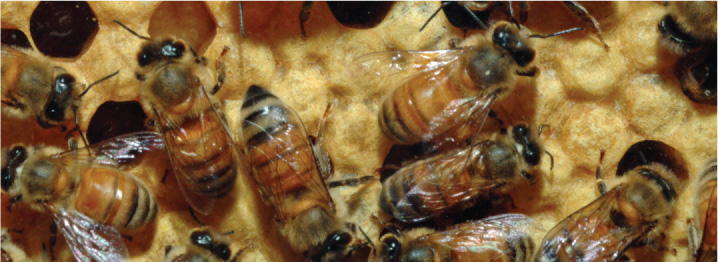
45.1 Tinbergen’s Questions 45-1
45.2 Genes and Behavior 45-2
The fixed action pattern is a stereotyped behavior. 45-2
The nervous system processes stimuli and evokes behaviors. 45-3
Hormones can trigger certain behaviors. 45-4
Breeding experiments can help determine the degree to which a behavior is genetic. 45-5
Molecular techniques provide new ways of testing the role of genes in behavior. 45-6
HOW DO WE KNOW?
Can genes influence behavior? 45-7
45.3 Learning 45-8
Non-associative learning occurs without linking two events. 45-8
Associative learning occurs when two events are linked. 45-9
Learning takes many forms. 45-9
HOW DO WE KNOW?
To what extent are insects capable of learning? 45-10
45.4 Orientation, Navigation, and Biological Clocks 45-11
Orientation involves a directed response to a stimulus. 45-11
Navigation is illustrated by the remarkable ability of homing in birds. 45-11
Biological clocks provide important time cues for many behaviors. 45-12
HOW DO WE KNOW?
Does a biological clock play a role in birds’ ability to orient? 45-12
45.5 Communication 45-13
Communication is the transfer of information between a sender and receiver. 45-14
Some forms of communication are complex and learned during a sensitive period. 45-15
Other forms of communication convey specific information. 45-15
45.6 Social Behavior 45-16
Group selection is a weak explanation of altruistic behavior. 45-16
Reciprocal altruism is one way that altruism can evolve. 45-17
Kin selection is based on the idea that it is possible to contribute genetically to future generations by helping close relatives. 45-18
45.7 Behavior and Sexual Selection 45-19
Patterns of sexual selection are governed by differences between the sexes in their investment in offspring. 45-20
Sexual selection can be intrasexual or intersexual. 45-20
CHAPTER 46 POPULATION ECOLOGY 46-1
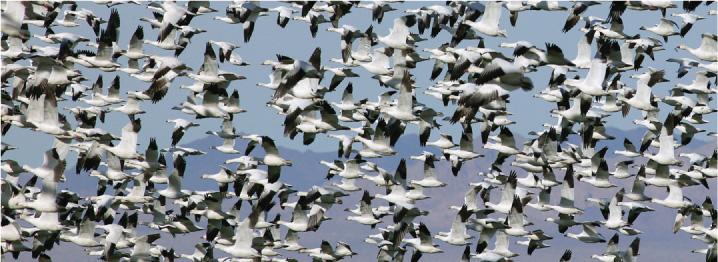
46.1 Populations and Their Properties 46-1
Three key features of a population are its size, range, and density. 46-2
Population size can increase or decrease over time. 46-3
Carrying capacity is the maximum number of individuals a habitat can support. 46-5
Factors that influence population growth can be dependent on or independent of its density. 46-6
Ecologists estimate population size and density by sampling. 46-6
HOW DO WE KNOW?
How many butterflies are there in a given population? 46-7
46.2 Age-Structured Population Growth 46-8
Birth and death rates vary with age and environment. 46-8
Survivorship curves record changes in survival probability over an organism’s life-span. 46-9
Patterns of survivorship vary among organisms. 46-10
Reproductive patterns reflect the predictability of a species’ environment. 46-10
The life history of an organism shows trade-offs among physiological functions. 46-11
46.3 Metapopulation Dynamics 46-12
A metapopulation is a group of populations linked by immigrants. 46-12
Island biogeography explains species diversity on habitat islands. 46-14
? How do islands promote species diversification? 46-15
Species coexistence depends on habitat diversity. 46-16
HOW DO WE KNOW?
Can predators and prey coexist stably in certain environments? 46-17
CHAPTER 47 SPECIES INTERACTIONS, COMMUNITIES, AND ECOSYSTEMS 47-1

47.1. The Niche 47-1
The niche is the ecological role played by a species in its community. 47-2
The realized niche of a species is more restricted than its fundamental niche. 47-3
47.2 Antagonistic Interactions Between Species 47-3
Limited resources foster competition. 47-4
Competition promotes niche divergence. 47-4
Species compete for resources other than food. 47-5
Predators and parasites can limit prey population size, minimizing competition. 47-5
47.3 Mutualistic Interactions Between Species 47-5
Mutualisms are interactions between species that benefit both participants. 47-6
Mutualisms may evolve increasing interdependence. 47-6
Mutualisms may be obligate or facultative. 47-6
HOW DO WE KNOW?
Have aphids and their symbiotic bacteria coevolved? 47-7
The costs and benefits of species interactions can change over time. 47-8
47.4 Ecological Communities 47-9
Species that live in the same place make up communities. 47-9
A single herbivore species can affect other herbivores and their predators. 47-9
Keystone species have disproportionate effects on communities. 47-10
Disturbance can modify community composition. 47-11
Succession describes the community response to new habitats or disturbance. 47-12
47.5 Ecosystems 47-13
Species interactions result in food webs that cycle carbon and other elements through ecosystems. 47-13
Species interactions form trophic pyramids that transfer energy through ecosystems. 47-15
Light, water, nutrients, and diversity all influence rates of primary production. 47-15
HOW DO WE KNOW?
Does species diversity promote primary productivity? 47-16
47.6 Biomes and Diversity Gradients 47-16
Biomes reflect the interaction of Earth and life. 47-19
Tropical biomes usually have more species than temperate biomes. 47-20
? Why are tropical species so diverse? 47-21
Evolutionary and ecological history underpins diversity. 47-22
CHAPTER 48 THE ANTHROPOCENE
Humans as a Planetary Force 48-1
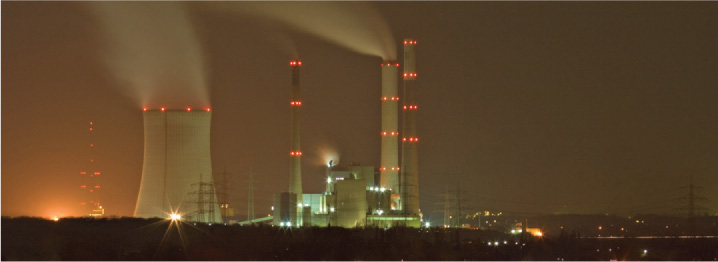
48.1 The Anthropocene Period 48-1
Humans are a major force on the planet. 48-1
48.2 Human Influence on the Carbon Cycle 48-3
As atmospheric carbon dioxide levels have increased, so has mean surface temperature. 48-3
Changing environments affect species distribution and community composition. 48-5
? How has climate change affected coral reefs around the world? 48-7
HOW DO WE KNOW?
What is the effect of increased atmospheric CO2 and reduced ocean pH on skeleton formation in marine algae? 48-9
What can be done? 48-10
48.3 Human Influence on the Nitrogen and Phosphorus Cycles 48-11
Nitrogen fertilizer transported to lakes and the sea causes eutrophication. 48-11
VISUAL SYNTHESIS Succession: Ecology in Microcosm 48-12
Phosphate fertilizer is also used in agriculture, but has finite sources. 48-14
What can be done? 48-14
48.4 Human Influence on Evolution 48-15
? How has human activity affected biological diversity? 48-15
Humans play an important role in the dispersal of species. 48-17
Humans have altered the selective landscape for many pathogens. 48-18
Are amphibians ecology’s “canary in the coal mine”? 48-19
48.5 Scientists and Citizens in the 21st Century 48-19
QUICK CHECK ANSWERS Q-1
GLOSSARY G-1
CREDITS/SOURCES CS-1
INDEX I-1